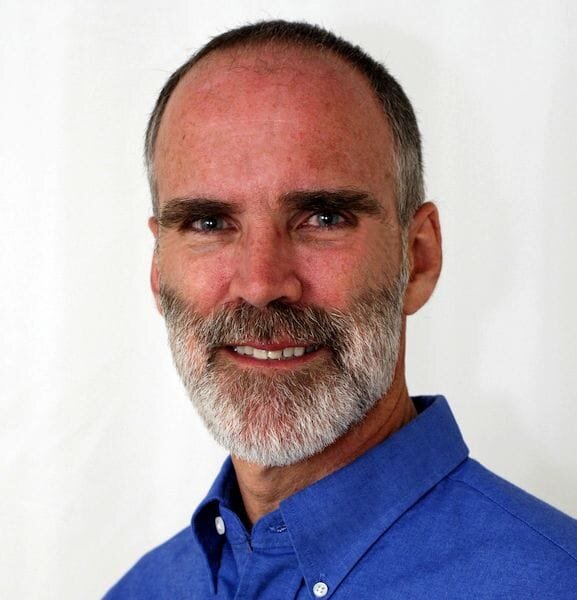
Xerox and HP are both large corporations involved in 3D printing, but Xerox is attempting to take over HP in a hostile bid.
We published our concerns on the matter last week, but thought we’d speak with an expert on these companies and their strategies.
Who else could we have contacted other than Pete Basiliere, who until very recently was Gartner’s focal point for all matters related to 3D printing, additive manufacturing AND 2D printing. The 2D aspect is also relevant here because both Xerox and HP have significant 2D operations. Basiliere now operates his own independent consulting firm, Monadnock Insights.
Basiliere describes his new venture, which could be of considerable interest to some Fabbaloo readers:
“Monadnock Insights provides research-based insights on 3D printing and digital-printing hardware, software and materials, best practices, go-to-market strategies and technology trends. He has more than four decades of engineering, operations management and thought-leadership experience. Formerly Gartner’s Research Vice President – Additive Manufacturing, Pete wrote Gartner’s 3D printer market forecasts, co-authored its annual Hype Cycles for 3D Printing and either wrote or contributed to more than 100 reports on 3D printing technology, trends and uses.”
So yes, he is definitely the right person to talk to about the Xerox / HP situation.
Fabbaloo: We’ve been hearing reports of Xerox attempting to perform a hostile takeover of HP. How is that possible when Xerox is actually quite a bit smaller than HP?
Pete Basiliere: Management of Xerox and HP have been communicating with each other through the media, although I imagine they are or have also been speaking directly. Xerox feels that it has lined up the financing commitments necessary to acquire HP. HP responded, in part, that “Xerox’s proposed transaction attempts to use HP’s financial capacities for the benefit of Xerox shareholders.”
Fabbaloo: What do you feel is the motivation behind Xerox to take on HP? Is there something specific they are trying to obtain?
Pete Basiliere: Despite bright spots such as wide format printing, textile printing and industrial printing, the worldwide analog and digital printing industry is contracting. Print buyers are purchasing less and, in many cases, replacing printed pieces with online and social media. So, on the one hand, the demand for both companies’ high volume digital production presses is shrinking.
On the other hand, the need for office and personal printing is also dramatically shrinking. That market change is reducing the need for the smaller format digital printers and all-in-one devices that both companies make.
Carl Icahn, the investor who is driving the idea of Xerox acquiring HP, sees $2 billion in synergies as well as market gaps in each company’s offer that can be plugged with the other company’s products and services.
Fabbaloo: If Xerox’s bid is successful, how do you think the two companies’ work in 3D printing may be affected? Or would it be affected at all?
Pete Basiliere: Neither company is talking about this topic right now. After all, management has to be cautious about what can and cannot be said publicly. On top of that, while 3D printing is an important market opportunity for both, the revenue generated by 3D printing, while not disclosed, is a small percentage of their overall 2D printing hardware, software and services revenue.
My sense is that, should the acquisition go through, there will be no near term effect on the companies’ respective 3D printing R&D or products. The companies employ different technologies that have different capabilities and customer benefits. If they come together then considerable time and money will be spent on deciding whether the two brands remain or somehow merge into one. At that point a coordinated marketing program could save money while possibly having an outsized effect on the market. The bigger question will be, if they combine, how and when the two companies’ 3D print channels evolve, but it is way too early to tell.
Fabbaloo: Are you aware of any specific 3D printing opportunities that are available once the intellectual property of the two parties are combined? What might be possible?
Pete Basiliere: Bear in mind that both companies have highly respected research organizations. Xerox has PARC and other labs, while HP also has internal labs. Both companies’ researchers – hardware, software, materials, imaging – are among the best in the world. Bringing them together could result in significant jetting technology advances ranging from 2D inkjet printing to 3D printing (binder, material, powder bed fusion) to bioprinting to 4D printing.
Fabbaloo: What other opportunities beyond 3D printing might present themselves to a combined Xerox / HP operation?
Pete Basiliere: The 2D printing markets are not going away. No one will ever go to a store and buy a product that is packaged in a white box. While diminished, paper is used in business operations worldwide. Point-of-sale, event and facility signage will never go away. And digital production printing will grow as it displaces analog printing (offset, flexography, gravure, etc.). Whether separate or combined, success will be based on the answer to this question: Can they morph into meaningful providers of 2D and 3D print hardware technology, software and services that tightly integrate with internet and social media marketing?
Fabbaloo: The bid has yet to play out, but in your opinion do you feel Xerox will succeed?
Pete Basiliere: The success of Xerox’s bid has little to do with 2D or 3D printing and everything to do with investing.

